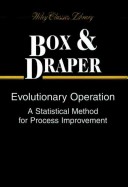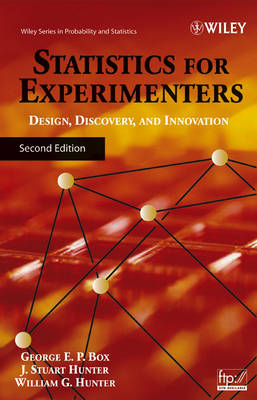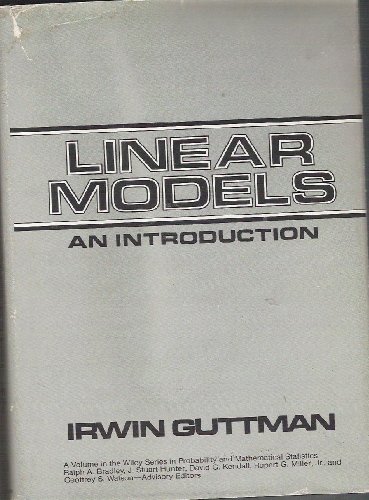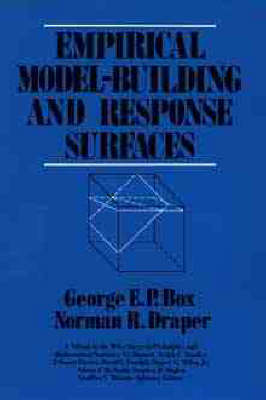Probability & Mathematical Statistics S.
5 total works
This book is about the philosophy and practice of Evolutionary Operation (called EVOP for short), a simple but powerful statistical tool with wide application in industry. Experience has long shown that statistical methods, sometimes quite sophisticated in character, can be of great value in improving the efficiency of laboratory and pilot-plant investigations made by specially trained chemists and engineers. What originally motivated the introduction of EVOP, however, was the idea that the widespread and daily use of simple statistical design and analysis during routine production by process operatives themselves could reap enormous additional rewards.
Statistics for Experimenters – Design, Innovation and Discovery 2e
by George E. P. Box, J. Stuart Hunter, and William G. Hunter
Published 6 July 1978
A Classic adapted to modern times Rewritten and updated, this new edition of Statistics for Experimenters adopts the same approaches as the landmark First Edition by teaching with examples, readily understood graphics, and the appropriate use of computers. Catalyzing innovation, problem solving, and discovery, the Second Edition provides experimenters with the scientific and statistical tools needed to maximize the knowledge gained from research data, illustrating how these tools may best be utilized during all stages of the investigative process. The authors' practical approach starts with a problem that needs to be solved and then examines the appropriate statistical methods of design and analysis. Providing even greater accessibility for its users, the Second Edition is thoroughly revised and updated to reflect the changes in techniques and technologies since the publication of the classic First Edition.
Among the new topics included are: * Graphical Analysis of Variance * Computer Analysis of Complex Designs * Simplification by transformation * Hands-on experimentation using Response Service Methods * Further development of robust product and process design using split plot arrangements and minimization of error transmission * Introduction to Process Control, Forecasting and Time Series * Illustrations demonstrating how multi-response problems can be solved using the concepts of active and inert factor spaces and canonical spaces * Bayesian approaches to model selection and sequential experimentation An appendix featuring Quaquaversal quotes from a variety of sources including noted statisticians and scientists to famous philosophers is provided to illustrate key concepts and enliven the learning process. All the computations in the Second Edition can be done utilizing the statistical language R. Functions for displaying ANOVA and lamba plots, Bayesian screening, and model building are all included and R packages are available online. All theses topics can also be applied utilizing easy-to-use commercial software packages.
Complete with applications covering the physical, engineering, biological, and social sciences, Statistics for Experimenters is designed for individuals who must use statistical approaches to conduct an experiment, but do not necessarily have formal training in statistics. Experimenters need only a basic understanding of mathematics to master all the statistical methods presented. This text is an essential reference for all researchers and is a highly recommended course book for undergraduate and graduate students.
Among the new topics included are: * Graphical Analysis of Variance * Computer Analysis of Complex Designs * Simplification by transformation * Hands-on experimentation using Response Service Methods * Further development of robust product and process design using split plot arrangements and minimization of error transmission * Introduction to Process Control, Forecasting and Time Series * Illustrations demonstrating how multi-response problems can be solved using the concepts of active and inert factor spaces and canonical spaces * Bayesian approaches to model selection and sequential experimentation An appendix featuring Quaquaversal quotes from a variety of sources including noted statisticians and scientists to famous philosophers is provided to illustrate key concepts and enliven the learning process. All the computations in the Second Edition can be done utilizing the statistical language R. Functions for displaying ANOVA and lamba plots, Bayesian screening, and model building are all included and R packages are available online. All theses topics can also be applied utilizing easy-to-use commercial software packages.
Complete with applications covering the physical, engineering, biological, and social sciences, Statistics for Experimenters is designed for individuals who must use statistical approaches to conduct an experiment, but do not necessarily have formal training in statistics. Experimenters need only a basic understanding of mathematics to master all the statistical methods presented. This text is an essential reference for all researchers and is a highly recommended course book for undergraduate and graduate students.
Introductory Engineering Statistics
by Irwin Guttman, S S Wilks, and J. Stuart Hunter
Published 1 January 1971
An introduction to engineering applications of statistics and the elements of mathematical theory that support these applications. Expanded coverage includes an introduction to reliability theory and practice; the use of contrasts in statistical analyses, notably in the analysis of variance situations; control charts; goodness-of-fit tests; regression analysis; the design of experiments; and Bayesian inference.
Empirical Model Building and Response Surfaces
by George E. P. Box and Norman Richard Draper
Published 16 January 1987
This innovative discussion of building empirical models and the fitting of surfaces to data, goes on to introduce the general philosophy of response surface methodology, and details least squares for response surface work. It provides factorial designs at two levels, fitting second-order models, adequacy of estimation and the use of transformation, occurrence and elucidation of ridge systems, and more. Some results are presented for the first time, and real-life exercises, nearly all with solutions, are also included.




